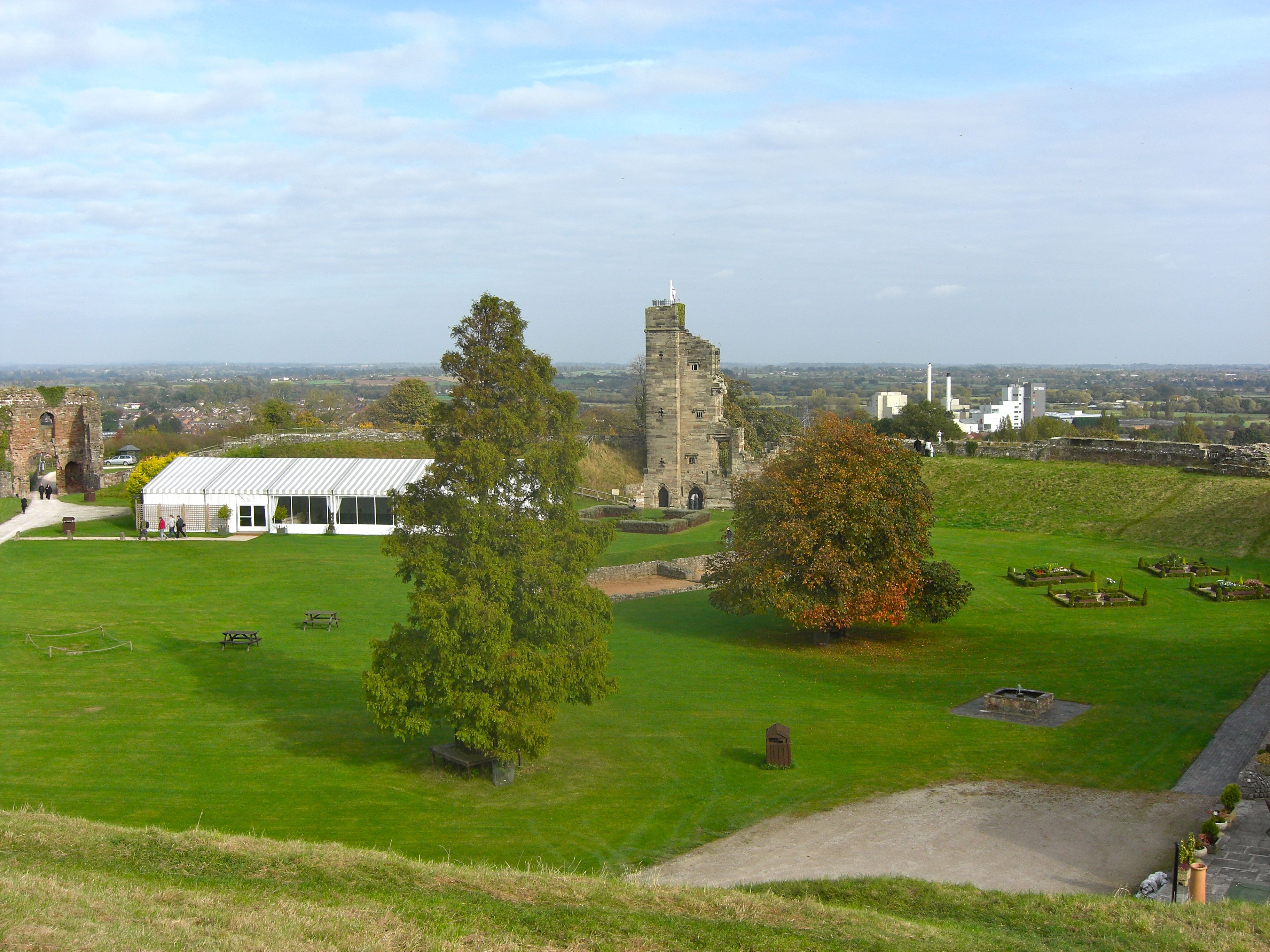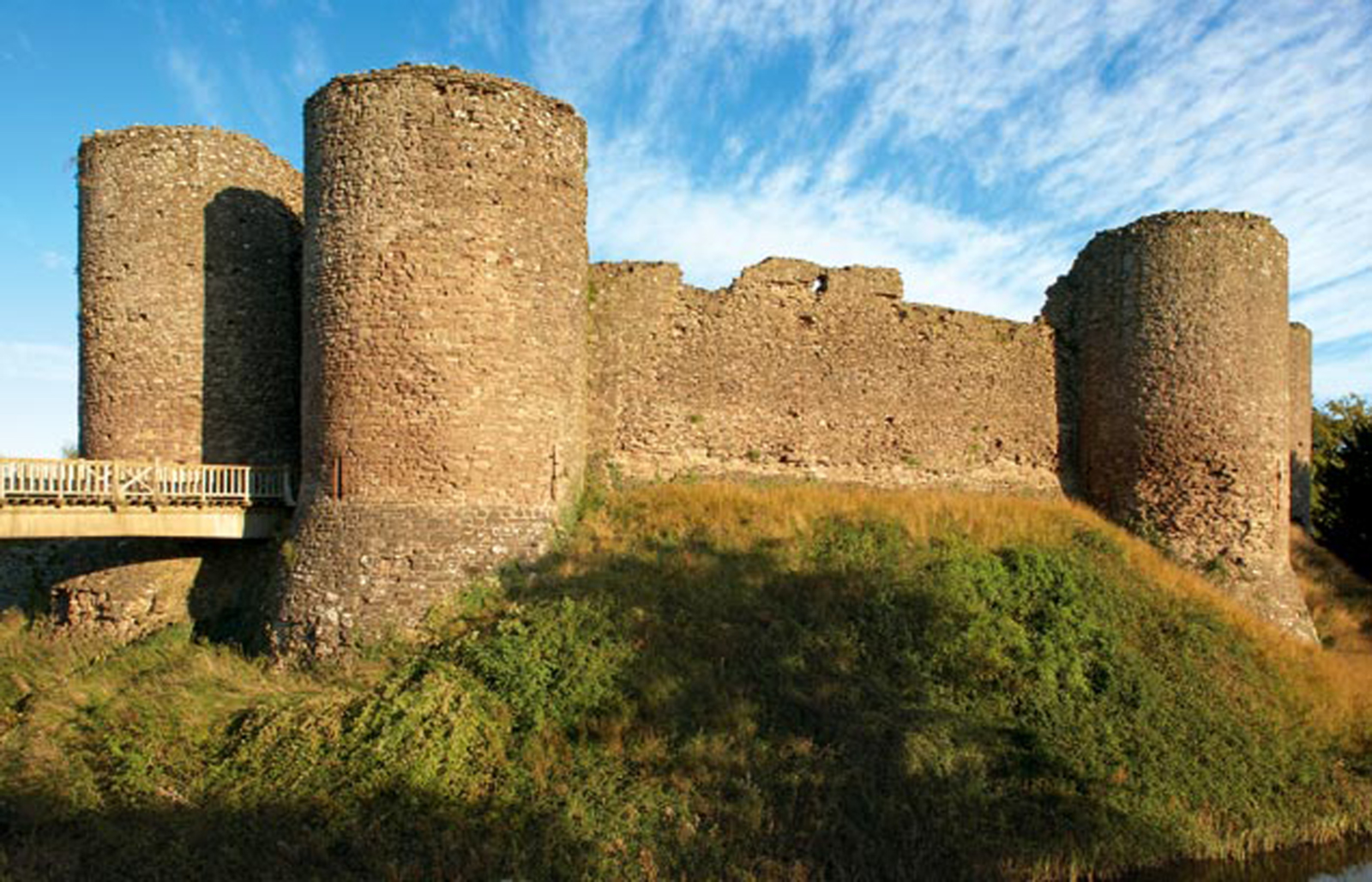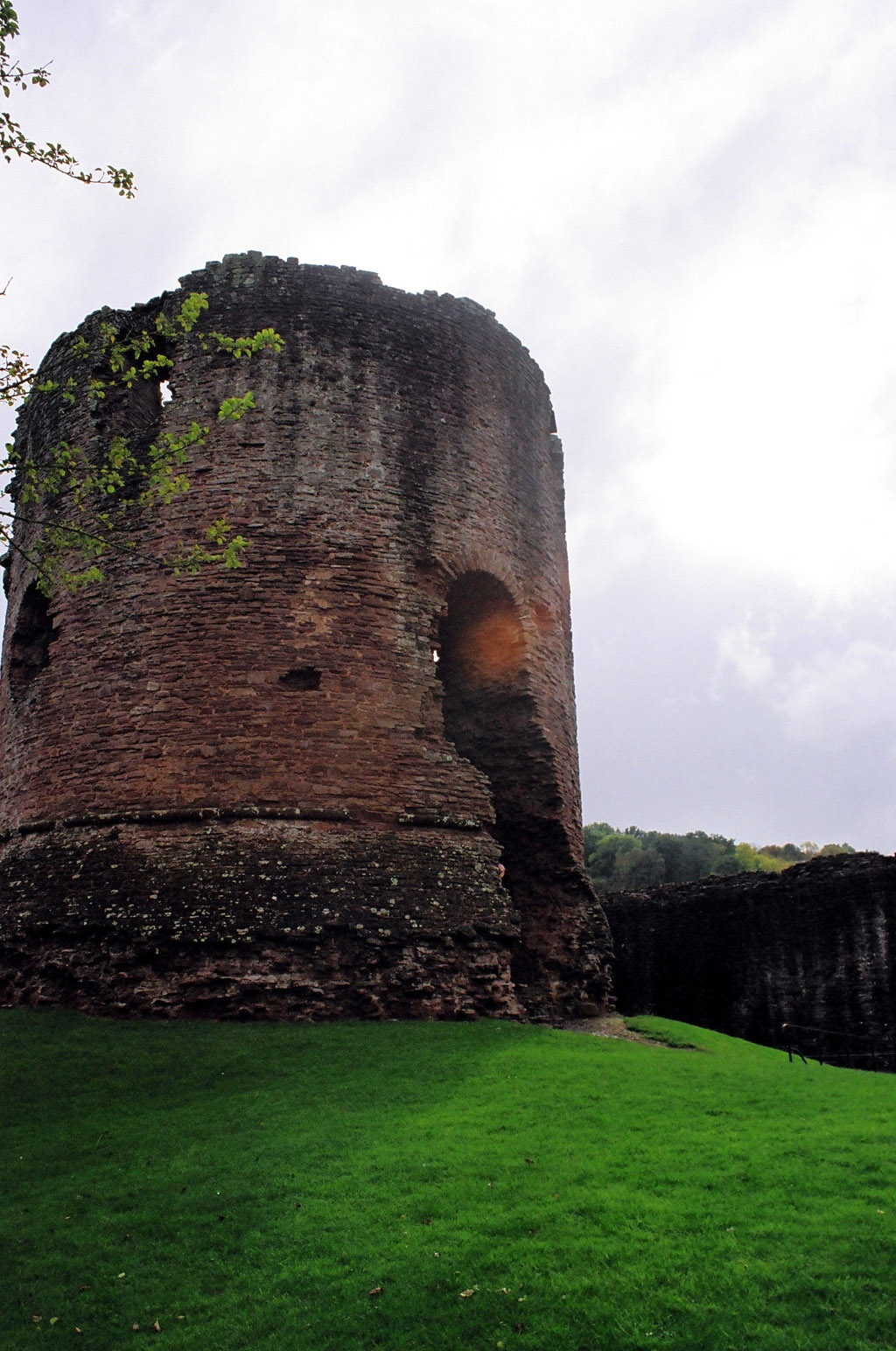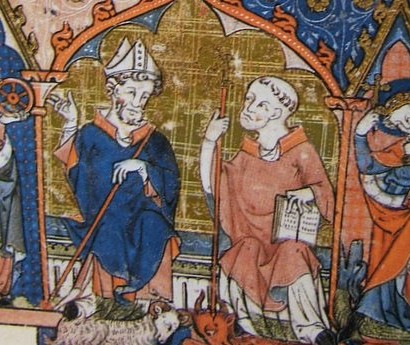|
Robert De Ferrers, 6th Earl Of Derby
Robert de Ferrers, 6th Earl of Derby (1239–1279) was an English nobleman. He was born at Tutbury Castle in Staffordshire, England, the son of William de Ferrers, 5th Earl of Derby, by his second wife Margaret de Quincy (born 1218), a daughter of Roger de Quincy, 2nd Earl of Winchester and Helen of Galloway. Early years In 1249, at the age of 10, he married the seven-year-old Mary (or Marie), daughter of Hugh XI of Lusignan Count of La Marche, the eldest of Henry III's half-brothers, at Westminster Abbey. This arranged marriage is an indication of Henry's high regard for Robert's father. William died in 1254, so Robert became a knight and inherited the title while he was still a minor. He and his estates became a ward of Prince Edward. In 1257, Edward sold the wardship to the queen and Peter of Savoy for 6000 marks, which might have been a source of the later antipathy of Ferrers for the prince. Inheritance Robert came of age in 1260 and took possession of the vast estate ... [...More Info...] [...Related Items...] OR: [Wikipedia] [Google] [Baidu] |
Tutbury Castle
Tutbury Castle is a largely ruined medieval castle at Tutbury, Staffordshire, England, in the ownership of the Duchy of Lancaster and hence currently of King Charles III. It is a Scheduled Ancient Monument. People who have stayed in the castle include Eleanor of Aquitaine and Mary, Queen of Scots, who was a prisoner there. History Norman origins Tutbury Castle became the headquarters of Henry de Ferrers and was the centre of the wapentake of Appletree, which included Duffield Frith. With his wife Bertha, he endowed Tutbury Priory with two manors in about 1080. It would seem that Tutbury at that time was a dependency of the Norman abbey of St Pierre‑sur‑Dives. Medieval era William de Ferrers, 3rd Earl of Derby joined a rebellion against Henry II in 1173–74 and Tutbury Castle was one of at least twenty castles belonging to the rebels that were slighted. The castle was "nearly destroyed" by Prince Edward in 1264 after the rebellion of Robert de Ferrers, 6th Earl of Derby ... [...More Info...] [...Related Items...] OR: [Wikipedia] [Google] [Baidu] |
River Ribble
The River Ribble runs through North Yorkshire and Lancashire in Northern England. It starts close to the Ribblehead Viaduct in North Yorkshire, and is one of the few that start in the Yorkshire Dales and flow westwards towards the Irish Sea (the Dee in Dentdale and the Twiss in Kingsdale being notable others). Etymology The name ''Ribble'' may be a Brittonic compound-formation. The second element is the noun ''*pol'', with connotations including "puddle, pond, upland-stream" (Welsh ''pwll''). The first is ''rö-'', an intensive prefix, with nouns meaning "great" (Welsh ''rhy-'', Cornish re-). Ribble may once have been known as ''*Bremetonā-'', underlying the name ''Bremetenacum'', the Roman fort at Ribchester. Involved here is the Brittonic root ''*breμ–'', meaning "roaring" (c.f. Welsh ''brefu''), as observed at the river-names Breamish in Northumberland, Braan in Scotland and Brefi in Wales. History Neolithic to Saxon finds from along the River Ribble during the ... [...More Info...] [...Related Items...] OR: [Wikipedia] [Google] [Baidu] |
Louis IX Of France
Louis IX (25 April 1214 – 25 August 1270), commonly known as Saint Louis or Louis the Saint, was King of France from 1226 to 1270, and the most illustrious of the Direct Capetians. He was crowned in Reims at the age of 12, following the death of his father Louis VIII Louis VIII (5 September 1187 – 8 November 1226), nicknamed The Lion (french: Le Lion), was King of France from 1223 to 1226. As prince, he invaded England on 21 May 1216 and was excommunicated by a papal legate on 29 May 1216. On 2 June 1216 .... His mother, Blanche of Castile, ruled the kingdom as regent until he reached maturity, and then remained his valued adviser until her death. During Louis' childhood, Blanche dealt with the opposition of rebellious vassals and secured Capetian success in the Albigensian Crusade, which had started 20 years earlier. As an adult, Louis IX faced recurring conflicts with some of his realm's most powerful nobles, such as Hugh X of Lusignan and Peter of Dreux. Simult ... [...More Info...] [...Related Items...] OR: [Wikipedia] [Google] [Baidu] |
White Castle (Wales)
White Castle ( cy, Castell Gwyn), also known historically as Llantilio Castle, is a ruined castle near the village of Llantilio Crossenny in Monmouthshire, Wales. The fortification was established by the Normans in the wake of the invasion of England in 1066, to protect the route from Wales to Hereford. Possibly commissioned by William fitz Osbern, the Earl of Hereford, it comprised three large earthworks with timber defences. In 1135, a major Welsh revolt took place and in response King Stephen brought together White Castle and its sister fortifications of Grosmont and Skenfrith to form a lordship known as the "Three Castles", which continued to play a role in defending the region from Welsh attack for several centuries. King John gave the castle to a powerful royal official, Hubert de Burgh, in 1201. Over the next few decades, it passed back and forth between several owners, as Hubert, the rival de Braose family, and the Crown took control of the property. During this perio ... [...More Info...] [...Related Items...] OR: [Wikipedia] [Google] [Baidu] |
Skenfrith Castle
Skenfrith Castle ( cy, Castell Ynysgynwraidd) is a ruined castle in the village of Skenfrith in Monmouthshire, Wales. The fortification was established by the Normans in the wake of the invasion of England in 1066, to protect the route from Wales to Hereford. Possibly commissioned by William fitz Osbern, the Earl of Hereford, the castle comprised earthworks with timber defences. In 1135, a major Welsh revolt took place and in response King Stephen brought together Skenfrith Castle and its sister fortifications of Grosmont and White Castle to form a lordship known as the "Three Castles", which continued to play a role in defending the region from Welsh attack for several centuries. At the end of the 12th century, Skenfrith was rebuilt in stone. In 1201, King John gave the castle to a powerful royal official, Hubert de Burgh. During the course of the next few decades, it passed back and forth between several owners, including Hubert, the rival de Braose family, and the Crown. ... [...More Info...] [...Related Items...] OR: [Wikipedia] [Google] [Baidu] |
Grosmont Castle
Grosmont Castle is a ruined castle in the village of Grosmont, Monmouthshire, Wales. The fortification was established by the Normans in the wake of the invasion of England in 1066, to protect the route from Wales to Hereford. Possibly commissioned by William fitz Osbern, the Earl of Hereford, it was originally an earthwork design with timber defences. In 1135, a major Welsh revolt took place, and in response King Stephen brought together Grosmont Castle and its sister fortifications of Skenfrith and White Castle to form a lordship known as the "Three Castles", which continued to play a role in defending the region from Welsh attack for several centuries. King John gave the castle to a powerful royal official, Hubert de Burgh, in 1201. During the course of the next few decades it passed back and forth between several owners, including Hubert, the rival de Braose family, and the Crown. Hubert rebuilt the castle in stone, beginning with a new hall and then, on regaining the p ... [...More Info...] [...Related Items...] OR: [Wikipedia] [Google] [Baidu] |
Second Barons' War
The Second Barons' War (1264–1267) was a civil war in England between the forces of a number of barons led by Simon de Montfort against the royalist forces of King Henry III, led initially by the king himself and later by his son, the future King Edward I. The barons sought to force the king to rule with a council of barons, rather than through his favourites. The war also involved a series of massacres of Jews by de Montfort's supporters, including his sons Henry and Simon, in attacks aimed at seizing and destroying evidence of baronial debts. To bolster the initial success of his baronial regime, de Montfort sought to broaden the social foundations of parliament by extending the franchise to the commons for the first time. However, after a rule of just over a year, de Montfort was killed by forces loyal to the king at the Battle of Evesham. Causes The reign of Henry III is most remembered for the constitutional crisis in this period of civil strife, which was provoked o ... [...More Info...] [...Related Items...] OR: [Wikipedia] [Google] [Baidu] |
Simon De Montfort, 6th Earl Of Leicester
Simon de Montfort, 6th Earl of Leicester ( – 4 August 1265), later sometimes referred to as Simon V de Montfort to distinguish him from his namesake relatives, was a nobleman of French origin and a member of the English peerage, who led the baronial opposition to the rule of King Henry III of England, culminating in the Second Barons' War. Following his initial victories over royal forces, he became ''de facto'' ruler of the country, and played a major role in the constitutional development of England. During his rule, Montfort called two famous parliaments. The first stripped Henry of his unlimited authority, while the second included ordinary citizens from the towns. For this reason, Montfort is regarded today as one of the progenitors of modern parliamentary democracy. As Earl of Leicester he expelled Jews from that city; as he became ruler of England he also cancelled debts owed to Jews through violent seizures of records. Montfort's party massacred the Jews of London, ... [...More Info...] [...Related Items...] OR: [Wikipedia] [Google] [Baidu] |
Richard De Clare, 5th Earl Of Hertford
Richard de Clare, 5th Earl of Hertford, 6th Earl of Gloucester, 2nd Lord of Glamorgan, 8th Lord of Clare (4 August 1222 – 14 July 1262) was the son of Gilbert de Clare, 4th Earl of Hertford and Isabel Marshal.History of Tewkesbury by James Bennett 77 He was also a powerful Marcher Lord in Wales and inherited the Lordship of Glamorgan upon the death of his father. He played a prominent role in the constitutional crisis of 1258–1263. Early life On his father's death, when he became Earl of Gloucester (October 1230), Richard was entrusted first to the guardianship of Hubert de Burgh. On Hubert's fall, his guardianship was given to Peter des Roches (c. October 1232); and in 1235 to Gilbert, Earl Marshall. Marriage Richard's first marriage to Margaret or Megotta, as she was also called, ended with either an annulment or her death in November 1237. They were both about 14 or 15. The marriage of Hubert de Burgh's daughter Margaret to Richard de Clare, the young Earl of Gloucester, b ... [...More Info...] [...Related Items...] OR: [Wikipedia] [Google] [Baidu] |
Gout
Gout ( ) is a form of inflammatory arthritis characterized by recurrent attacks of a red, tender, hot and swollen joint, caused by deposition of monosodium urate monohydrate crystals. Pain typically comes on rapidly, reaching maximal intensity in less than 12 hours. The joint at the base of the big toe is affected in about half of cases. It may also result in tophi, kidney stones, or kidney damage. Gout is due to persistently elevated levels of uric acid in the blood. This occurs from a combination of diet, other health problems, and genetic factors. At high levels, uric acid crystallizes and the crystals deposit in joints, tendons, and surrounding tissues, resulting in an attack of gout. Gout occurs more commonly in those who: regularly drink beer or sugar-sweetened beverages; eat foods that are high in purines such as liver, shellfish, or anchovies; or are overweight. Diagnosis of gout may be confirmed by the presence of crystals in the joint fluid or in a deposit outsid ... [...More Info...] [...Related Items...] OR: [Wikipedia] [Google] [Baidu] |
Frank-marriage
Frank-marriage, ''maritagium'' or ''liberum maritagium'' was a form of conditional marriage-gift of land under English law, often from father to daughter. It was classed as a type of fee tail. In early medieval England land could be given to a bride on her marriage with the intent that it should descend to the children of the marriage to help set up the new family. Since land given in fee absolute (outright) was at risk of ultimately passing to collateral heirs or being sold or given away ( alienation), it was common practice to ensure that the land remained with the direct heirs by giving it instead in frank-marriage (''in liberum maritagium''). Under this system, the donor's daughter and later the children of the marriage would hold the land for three generations free of all feudal services, with the donor or his heirs being able to recover it in the event that the direct family line ended during that period. If the family line survived for three generations, the land would c ... [...More Info...] [...Related Items...] OR: [Wikipedia] [Google] [Baidu] |
Worcester, England
Worcester ( ) is a cathedral city in Worcestershire, England, of which it is the county town. It is south-west of Birmingham, north-west of London, north of Gloucester and north-east of Hereford. The population was 103,872 in the 2021 Census. The River Severn flanks the western side of the city centre. It is overlooked by Worcester Cathedral. Worcester is the home of Royal Worcester, Royal Worcester Porcelain, composer Edward Elgar, Lea & Perrins, makers of traditional Worcestershire sauce, the University of Worcester, and ''Berrow's Worcester Journal'', claimed as the world's oldest newspaper. The Battle of Worcester in 1651 was the final battle of the English Civil War, during which Oliver Cromwell's New Model Army defeated Charles II of England, King Charles II's Cavalier, Royalists. History Early history The trade route past Worcester, later part of the Roman roads in Britain, Roman Ryknild Street, dates from Neolithic times. It commanded a ford crossing over the Rive ... [...More Info...] [...Related Items...] OR: [Wikipedia] [Google] [Baidu] |








